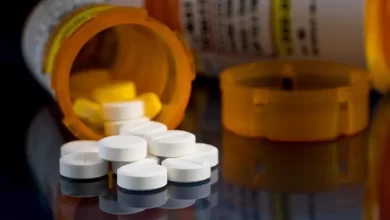Effects Of Sildenafil On Male Volunteers’ Sperm Function

Several factors must be considered when interpreting the results of a male sperm function study. This article will discuss the study’s Exclusion criteria, Pharmacokinetics, and Side-effects. It will also discuss how the study was performed. Read on to learn more. In addition, we will discuss the results of other studies comparing different drugs. These studies will provide a solid foundation for further research.
Results
To investigate the effects of sildenafil on male sperm function, researchers studied concentrations of the drug in both ejaculate and semen samples. The concentrations of cenforce in the semen were compared with those of the drug in plasma. Although the two drugs showed similar results, differences were noted. These differences were most prominent in semen concentrations, which tended to be higher than in plasma.
Researchers compared the effects of sildenafil on sperm motility, density, morphology, and vitality in healthy male volunteers. Their findings showed that cenforce had little to no effect on sperm count, morphology, or vitality. The drug also failed to affect ejaculate viscosity. However, these results are not surprising. Because male sperm do not respond well to medications, men with impaired ejaculate quality are more likely to become infertile.
Exclusion criteria
Studies of male volunteers in clinical trials of sildenafil have a high failure rate and exclusion criteria were strictly adhered to. Data not relevant to current clinical practice, reports of drugs not in use, and models of prostheses no longer in use were excluded. References of review articles were also checked to ensure the inclusion of all relevant studies and that multiple reports from the same patient group did not contain redundant information.
Pharmacokinetics
We assessed the pharmacokinetics of sildenafil in the test of ejaculate and sperm functions in male volunteers using noncompartmental analysis (PCA). We calculated the concentration-time curves for sildenafil and UK-103,320, and we used a model that uses the non-compartmental analysis method, WinNonlin(TM) Version 1.1, which can be downloaded from the Pharsight Corporation.
The results of this study indicate that sildenafil has minimal effect on sperm motility and count. The drug has no effect on morphologic abnormalities, ejaculate volume, or viscosity, according to Aversa et al. The drug was administered orally in two-way crossover trials. The dose of Cenforce 100mg administered was , followed by a four-hour break. After six hours, additional semen samples were collected to examine whether the drug had any effect on sperm count or motility.
Side-effects
In a recent study, researchers evaluated the effects of sildenafil on the sperm function of male volunteers. They measured the concentration of sildenafil and its major circulating metabolite, UK-103,320, in the volunteers’ sperm. They then compared these results to the levels of sildenafil in the volunteers’ plasma and semen.
The results of the study indicate that cenforce does not have a major impact on sperm motility or count. Aversa et al. studied 20 healthy male volunteers and found no significant difference between the two groups in ejaculatory and progressive motility parameters. The authors also found no significant differences between the two groups in the morphology of the sperm, or in the number of ejaculatory refractory times.
Pre-study screening
The pre-study screening for effects of cenforce on male volunteers’ sperm functioning included two sex-based methods. The first method uses a peanut agglutinin probe, which binds to the outer acrosome membrane. In Blumer et al. (2012), this method was used to examine sperm integrity. The second method involves using a fluorescein isothiocyanate probe conjugated to the acrosome membrane. In addition, a single male volunteer must undergo a sex-related activity, and must agree to use a condom for at least 45 days prior to taking the cenforce dose.
Sperm function was assessed before the study began, and ejaculatory abstinence was measured for 2 days and four days after the study began. After four days, mitochondrial activity and DNA integrity were measured. These measurements were analyzed using a Wilcoxon signed-ranks test and Student’s t-test. In addition, the epididymal function was assessed by using 3,3-diaminobenzidine chromogen.
Source:- Postings



